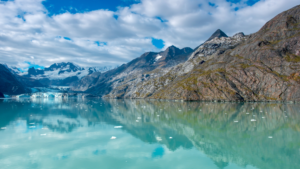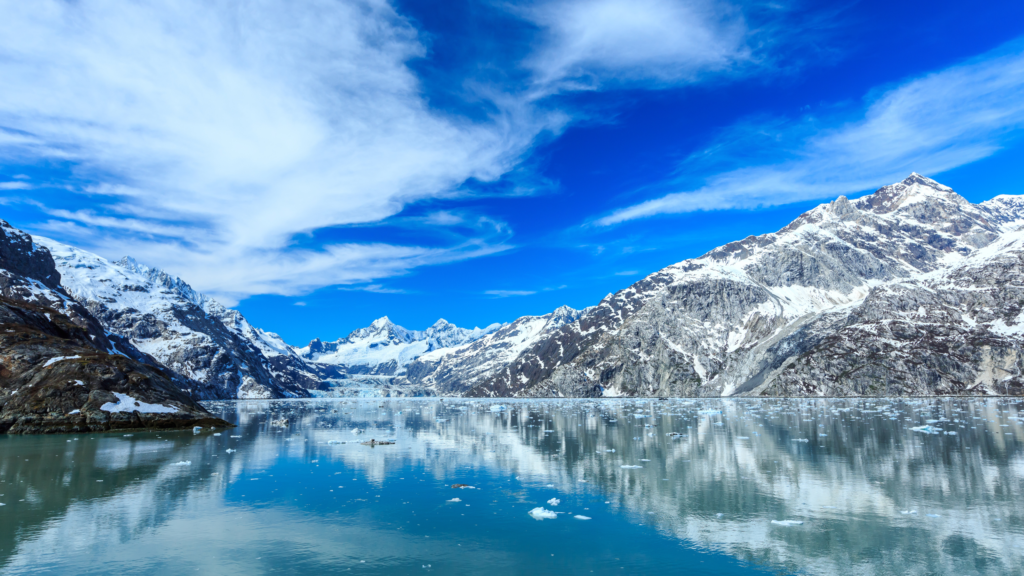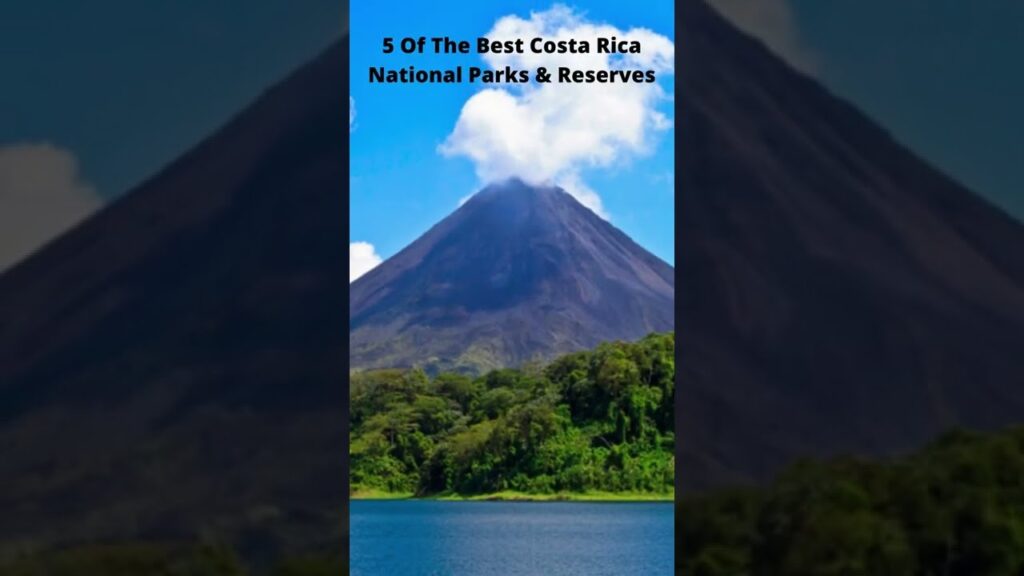-
Table of Contents
Explore the Wonders of Glacier Bay National Park!
Glacier Bay National Park is a stunningly beautiful and remote wilderness area located in the southeastern corner of Alaska. It is home to some of the most spectacular glaciers, mountains, and wildlife in the world. The park is a UNESCO World Heritage Site and is one of the most visited national parks in the United States. Glacier Bay National Park is a great place to explore and experience the beauty of Alaska’s wild and rugged landscape. Visitors can explore the park’s glaciers, mountains, and wildlife, as well as take part in a variety of activities such as kayaking, fishing, and hiking. Whether you’re looking for a peaceful getaway or an adventure-filled vacation, Glacier Bay National Park has something for everyone.
The Cultural Significance of Glacier Bay National Park
Glacier Bay National Park is a stunningly beautiful and culturally significant place. Located in Alaska, it is home to a variety of wildlife, including whales, seals, and sea lions. It is also home to the Tlingit people, who have lived in the area for thousands of years.
The Tlingit people have a deep connection to Glacier Bay National Park. They have a long history of fishing, hunting, and gathering in the area. They also have a strong spiritual connection to the land, believing that it is a place of healing and renewal. The Tlingit people have a deep respect for the land and its resources, and they strive to protect it.
The Tlingit people have a rich cultural heritage that is reflected in the park. They have a unique language, art, and music that are all part of their culture. The park also contains many artifacts and sites that are important to the Tlingit people. These include ancient villages, petroglyphs, and burial sites.
Glacier Bay National Park is also home to a variety of wildlife. It is a popular destination for whale watching, as well as for bird watching. The park is also home to a variety of fish, including salmon, halibut, and cod.
Glacier Bay National Park is a place of great beauty and cultural significance. It is a place where people can come to appreciate the beauty of nature and to learn about the culture of the Tlingit people. It is a place of healing and renewal, and a place where people can come to connect with the land and its resources.
Kayaking and Boating in Glacier Bay National Park

If you’re looking for an unforgettable outdoor adventure, then Glacier Bay National Park is the perfect destination for you! This stunning park is located in Alaska and is home to some of the most beautiful and pristine waters in the world.
Kayaking and boating are two of the most popular activities in Glacier Bay National Park. The waters here are calm and crystal clear, making it the perfect place to explore by boat. You can rent kayaks and boats from the park’s visitor center, or bring your own.
The park is home to a variety of wildlife, including whales, seals, sea lions, and bald eagles. You may even spot a bear or two! Keep your eyes peeled for these majestic creatures as you paddle around the bay.
The park also offers a variety of guided tours, so you can learn more about the area’s history and wildlife. You can also take a boat tour to explore the park’s many glaciers.
No matter what type of adventure you’re looking for, Glacier Bay National Park has something for everyone. So grab your kayak or boat and get ready to explore this stunning park!
The Best Hiking Trails in Glacier Bay National Park
Glacier Bay National Park is a stunningly beautiful place to explore, and the best way to do that is by hitting the trails! Here are some of the best hiking trails in the park:
1. Bartlett Cove Trail: This easy, 1.5-mile loop trail is a great way to get acquainted with the park. It takes you through a variety of habitats, including a beach, a forest, and a meadow.
2. McBride Glacier Trail: This moderate, 4-mile round-trip trail takes you to the face of McBride Glacier. Along the way, you’ll get stunning views of the glacier and the surrounding mountains.
3. Beardslee Islands Trail: This moderate, 4-mile round-trip trail takes you to the Beardslee Islands, where you can see a variety of wildlife, including sea lions, seals, and whales.
4. South Marble Island Trail: This moderate, 4-mile round-trip trail takes you to South Marble Island, where you can see a variety of wildlife, including sea lions, seals, and whales.
5. East Arm Trail: This moderate, 8-mile round-trip trail takes you to the East Arm of Glacier Bay, where you can see stunning views of the glaciers and mountains.
No matter which trail you choose, you’re sure to have an amazing experience in Glacier Bay National Park. So grab your hiking boots and get out there!
The History and Geology of Glacier Bay National Park
Glacier Bay National Park is a stunningly beautiful and unique place located in Alaska. It is home to a variety of wildlife, including whales, seals, and sea lions, as well as a variety of birds. But what makes Glacier Bay National Park so special is its geology and history.
The park was formed by the retreat of glaciers over the last 200 years. The glaciers carved out the fjords and valleys that make up the park today. As the glaciers retreated, they left behind a landscape of mountains, valleys, and fjords. This landscape is constantly changing as the glaciers continue to retreat.
The geology of Glacier Bay National Park is also fascinating. The park is made up of sedimentary rocks, such as sandstone and shale, as well as igneous rocks, such as granite and basalt. These rocks were formed by the movement of glaciers over millions of years. The rocks are also home to a variety of fossils, including those of ancient marine life.
The history of Glacier Bay National Park is also fascinating. The park was first explored by Europeans in 1794, when Captain George Vancouver sailed through the area. In 1879, John Muir visited the area and wrote about its beauty. In 1925, President Calvin Coolidge declared the area a national monument. In 1980, it was designated a national park.
Today, Glacier Bay National Park is a popular destination for visitors from all over the world. It is a place of stunning beauty and a reminder of the power of nature. It is also a place of great historical and geological significance.
Exploring the Wildlife of Glacier Bay National Park
Glacier Bay National Park is a stunningly beautiful and diverse natural wonderland located in Alaska. It’s home to a wide variety of wildlife, from majestic whales to playful sea otters. Whether you’re a nature enthusiast or just looking for a unique outdoor experience, Glacier Bay National Park is the perfect place to explore the wonders of the natural world.
The park is home to a variety of marine mammals, including humpback whales, orcas, sea lions, and harbor seals. You can also spot sea otters, porpoises, and dolphins in the waters of Glacier Bay. The park is also a great place to observe birds, with over 200 species of birds living in the area. Bald eagles, puffins, and murres are just a few of the birds you can spot in the park.
In addition to its marine life, Glacier Bay National Park is also home to a variety of land animals. You can spot moose, black and brown bears, wolves, and mountain goats in the park. There are also smaller animals like beavers, marmots, and snowshoe hares.
The best way to explore the wildlife of Glacier Bay National Park is to take a boat tour. You can get up close and personal with the animals, and you’ll have the chance to spot some of the park’s most elusive creatures. You can also take a kayak tour or hike the trails to get a better view of the park’s wildlife.
No matter how you choose to explore Glacier Bay National Park, you’re sure to have an unforgettable experience. The park’s wildlife is truly awe-inspiring, and you’ll be sure to come away with some amazing memories.
Q&A
Q: Where is Glacier Bay National Park located?
A: Glacier Bay National Park is located in southeastern Alaska, about 65 miles west of Juneau.
Q: What type of wildlife can be found in Glacier Bay National Park?
A: Glacier Bay National Park is home to a variety of wildlife, including humpback whales, sea otters, harbor seals, bald eagles, and many species of fish.
Q: What activities are available in Glacier Bay National Park?
A: Visitors to Glacier Bay National Park can enjoy a variety of activities, including kayaking, fishing, wildlife viewing, and hiking.
Q: How large is Glacier Bay National Park?
A: Glacier Bay National Park covers an area of 3.3 million acres.
Q: When is the best time to visit Glacier Bay National Park?
A: The best time to visit Glacier Bay National Park is during the summer months, from May to September.Glacier Bay National Park is a stunning and unique destination that offers visitors a chance to experience the beauty of Alaska’s wilderness. From its majestic glaciers to its abundant wildlife, Glacier Bay National Park is a must-see for anyone looking to explore the great outdoors. With its diverse landscape and abundance of activities, Glacier Bay National Park is sure to provide visitors with an unforgettable experience.
![]()











